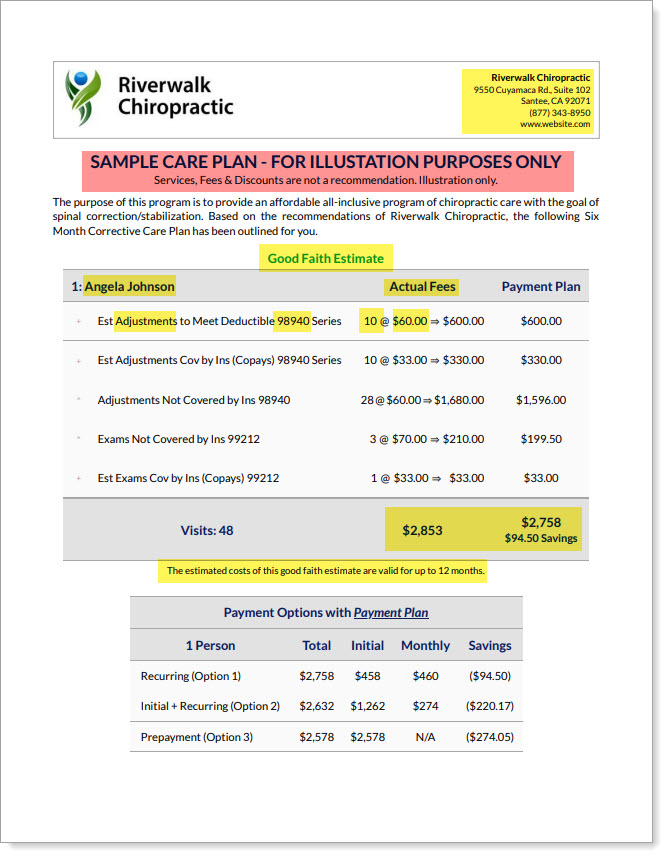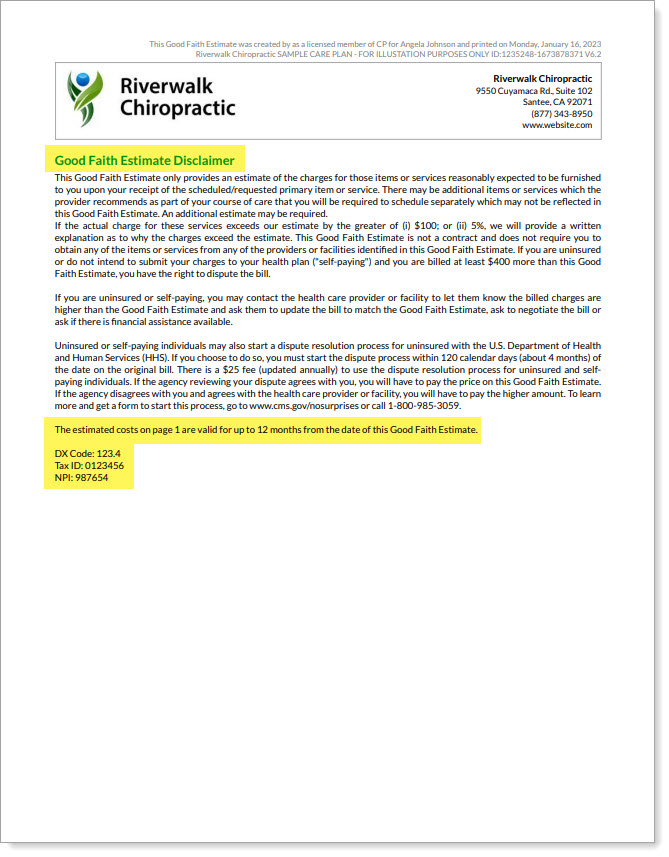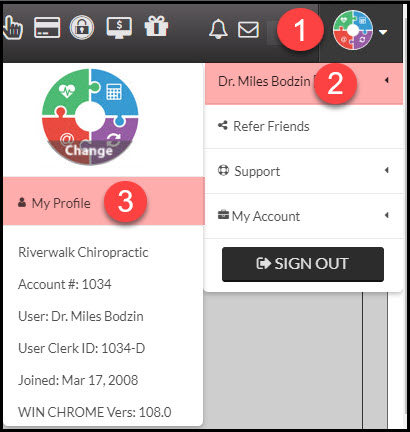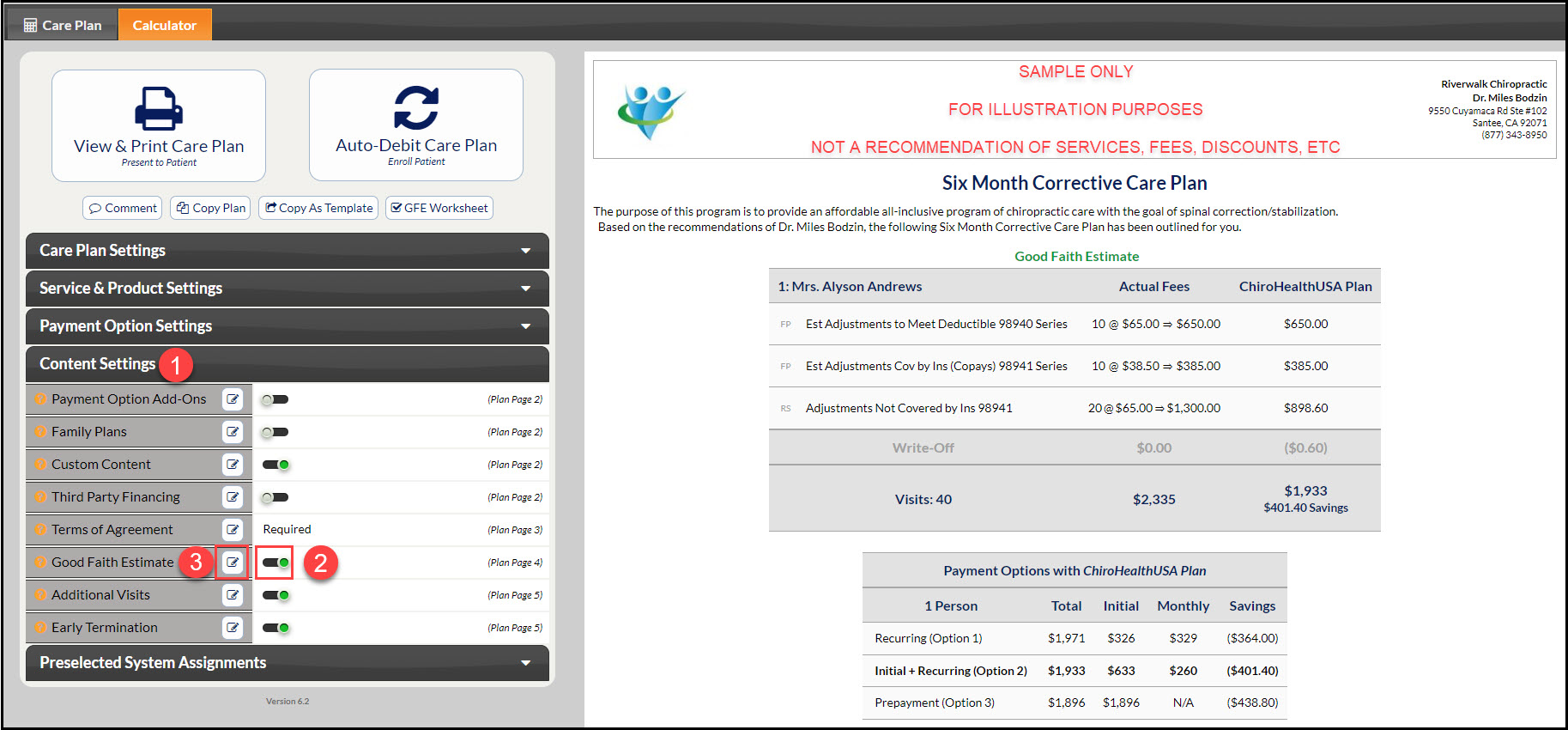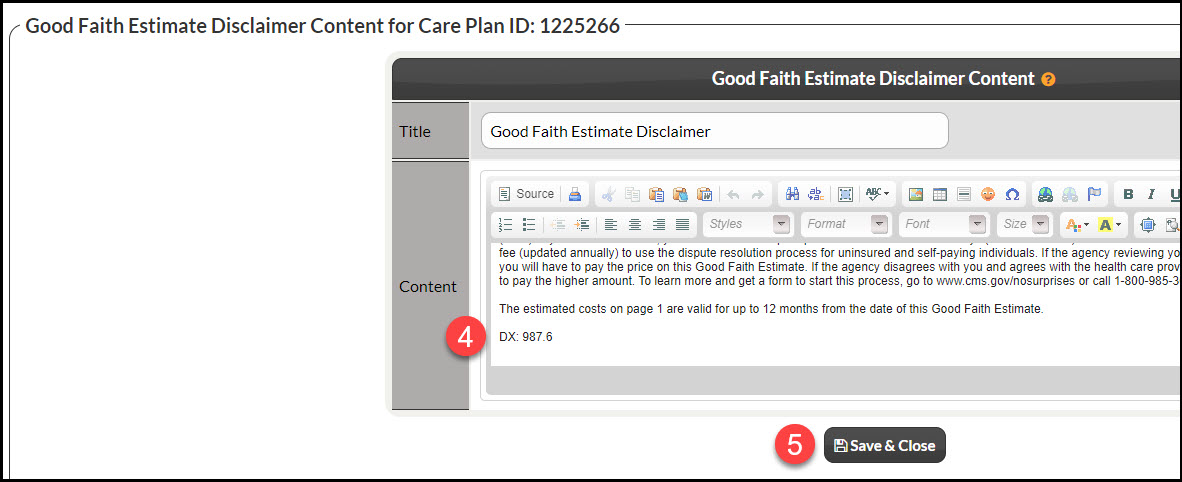The Patient No Surprises Act (NSA) was put into place in January 2022. It’s used to prevent patients from being hit with a bill that they weren't aware of. The NSA has imposed numerous requirements on healthcare providers and facilities nationwide. The challenge that falls on most single-provider clinics is the task of identifying which portions of the law applies to them. While the majority of the rules and regulations apply to facilities, hospitals, and surgery centers, the Good Faith Estimate (GFE) has a much wider application. Learn more about the NSA Course from KMC University here.
Requirements for DCs
The Good Faith Estimate portion of the law impacts the majority of provider types and is one of the few regulations that was enforced on January 1, 2022. Simply put, if the consumer (patient) is self-pay, uninsured, or opting not to use their health insurance, the provider must offer a Good Faith Estimate (GFE), in writing, to the patient. Source: cms.gov
But I'm a cash-based practice, so I don't have to do this, right?
Wrong, the NSA applies to all healthcare providers, even cash-based practices according to Code of Regulations 149.610
What is Required?
At this point, most providers just want to know what is required of them regarding the No Surprises Act. Patience is key when learning about new regulations and requirements.
Per CMS resources, under Section 2799B-6 of the Public Health Service Act and its implementing regulations, “health care providers, are required to provide a good faith estimate of expected charges for items and services” to individuals who are:
- not enrolled in a group health plan or group or individual health insurance coverage (uninsured individuals),
- or not enrolled in a Federal health care program,
- or not enrolled in a Federal Employees Health Benefits (FEHB) program health benefits plan
- or not seeking to file a claim with their group health plan, health insurance coverage, or FEHB health benefits plan (self-pay individuals)
In summary, a Doctor of Chiropractic is required to offer in writing a good faith estimate to self-pay, uninsured individuals. Self-pay patients are also those insured patients who choose not to use their benefits for a particular service or item.
Timeline For Providing a GFE
If the appointment is scheduled:
- 10 business days in advance, the GFE must be provided within three business days
- 3-9 business days in advance, the GFE must be provided within one business day
- less than 3 days in advance the clinic IS NOT required to provide a GFE in writing. Notify orally upon scheduling; provide an estimate of the initial evaluation
- If patients request a GFE on their own, the clinic must provide one within 3 days of the request.
- If the patient is just exploring options and does not schedule the appointment, the provider must furnish the GFE within 3 business days of the request.
- If the patient has scheduled multiple visits, the provider can provide a GFE with recurring services. It should include details such as frequency and time frame if possible. These are normally good for 12 months.
Compliance
A good faith estimate is required to be an estimate that is customized to the patient. It should only include services that are recommended for that patient. The law requires the estimate to be within $400.00 of the billed charges. If there is a discrepancy that is greater than $400.00, the patient has the right to file a complaint and initiate the patient-provider dispute resolution (PPDR) process via a Selected Dispute Resolution (SDR) entity.
The PPDR process is for:
- People without health insurance
- People with health insurance who receive an item or service that isn’t covered by their plan or coverage
- People with health insurance who do not plan to use their coverage to pay for a portion or all of the costs for the item or service
Implementation Task
The provider must:
- Offer a Good Faith Estimate, and if accepted, provide both an oral and written Good Faith Estimate (GFE) before the scheduled service (some exceptions apply)
- Create a process to identify all patients’ insurance status and/or intention of using their health insurance before making the appointment
- Display a notice about the availability of Good Faith Estimates in the office or on the website
- Offer a Good Faith Estimate even if the patient does not schedule
- Provide the Good Faith Estimate in paper format or electronically according to the patient’s wishes even if the patient requests the estimate orally
Learn more about the NSA Course from KMC University here.
The good news is that you've already been doing this if you're using the Care Plan Calculator®!
The patient's care is packaged up using the Care Plan Calculator which clearly shows your NSA Good Faith Estimate.
To help satisfy the GFE, the plan lists out:
- All services and products that are being recommended during the treatment period
- Insured visits (page 1)
- Including the patient's financial responsibilities (copays, coinsurance & deductible)
- Non-insured visits (page 1)
- CPT codes (page 1)
- Actual fees (page 1)
- (Optional) Discounted plan fees on non-covered services and products (page 1)
- Insured visits (page 1)
- GFE valid dates (page 1)
- GFE Disclaimer (page 4)
- General diagnoses code (page 4)
- Tax ID (page 4)
- NPI (page 4)
Example: Based upon your clinical recommendations, you give your patient a treatment plan of 40 visits over the next 6 months.
Page 4 of the printed plan includes a Good Faith Estimate Disclaimer that includes a valid time frame, along with DX code, TAX ID & NPI to help satisfy additional requirements of the good faith estimate.
To add your NPI/Tax ID to your Cash Practice account so that it pre-populates in your Good Faith Estimate Disclaimer, follow these instructions:
Step 1: Log in to your account as the Admin/Owner.
Step 2: Hover over the [User Profile] in the top right corner of your screen → hover over the admin name/account number → click on [My Profile].
Step 3: In the [License Info] section, add your Tax ID & NPI.
Step 4: Scroll to the bottom & click [Save].
To add the Good Faith Estimate Disclaimer to your care plan, follow these instructions:
Step 1: When creating or editing a care plan, click on [Content Settings].
Step 2: Turn ON [Good Faith Estimate Disclaimer]. The toggle will be green when turned on.
Step 3: Click on the editor icon.
Step 4: Add the DX code per individual patient in the [Good Faith Estimate Disclaimer] section.
Step 5: Click [Save & Close].
The information you typed in the [Good Faith Estimate Disclaimer] section will appear on page 4 of the printed plan.

